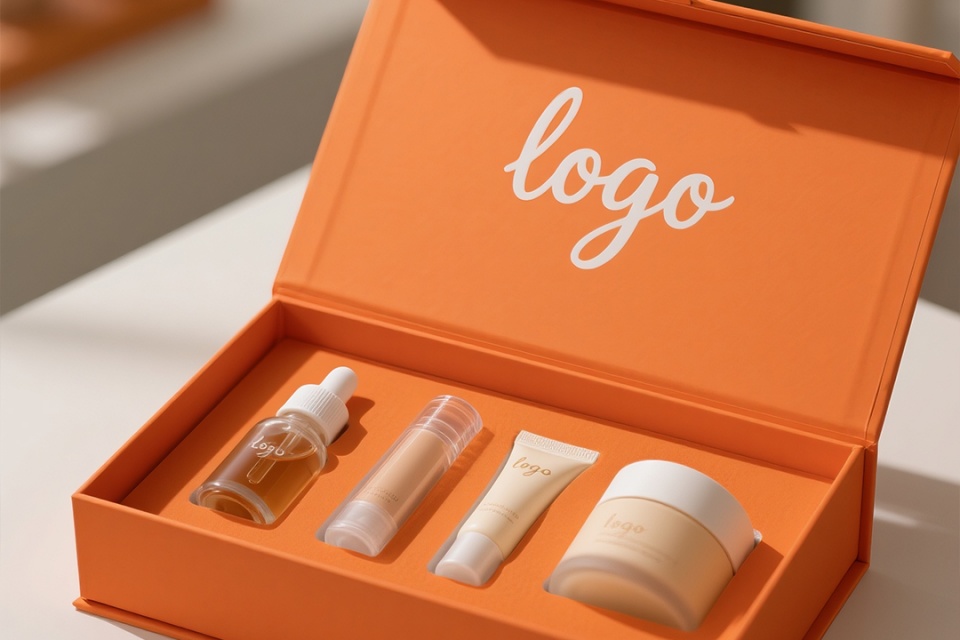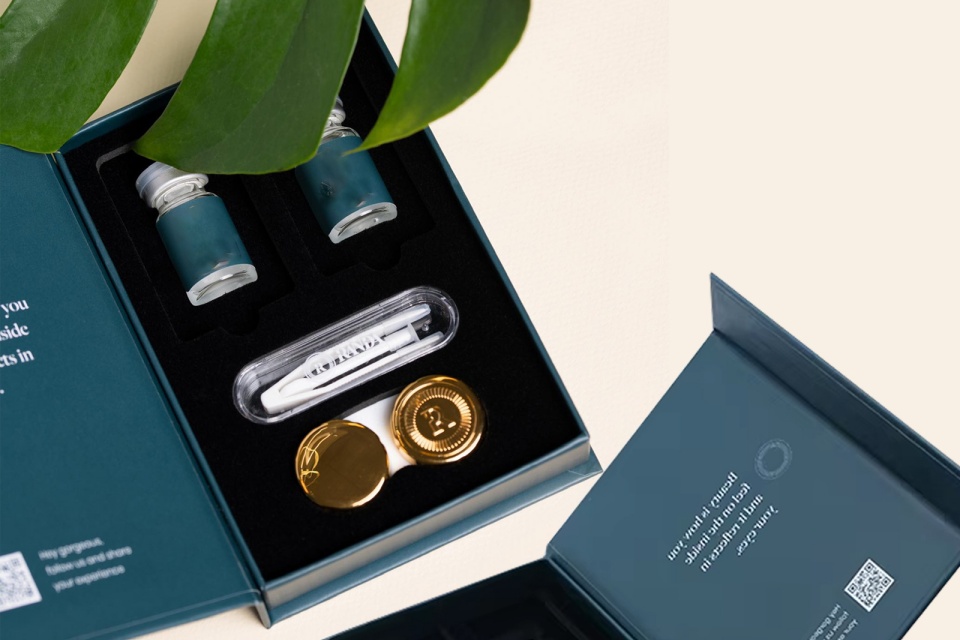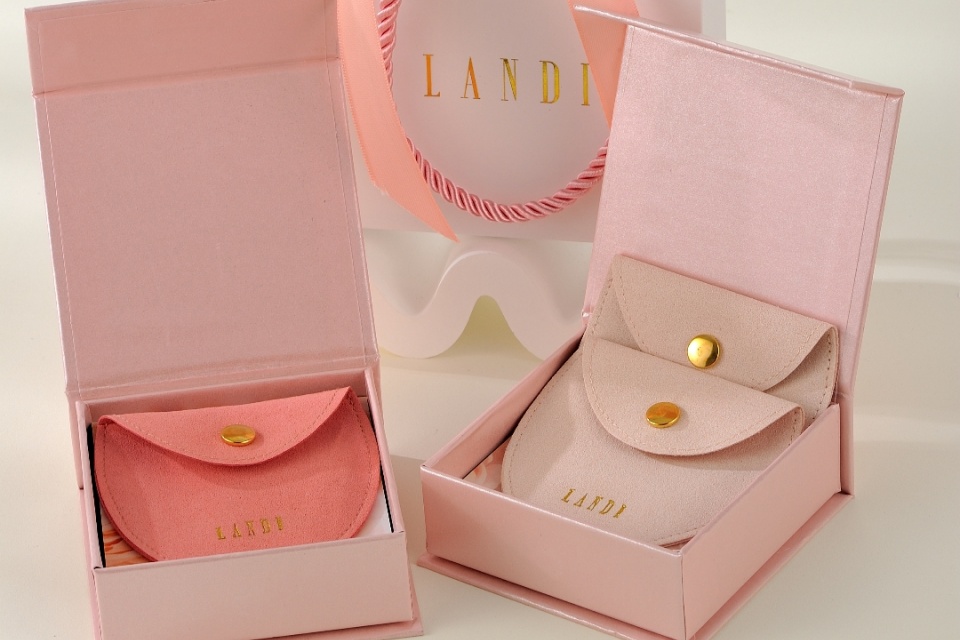Industry News
Designing Social-Media-Shareable Packaging
Designing Social-Media-Shareable Packaging
Summary
Designing social-media-shareable packaging has emerged as a vital aspect of modern marketing strategy, blending aesthetics with functionality to create engaging consumer experiences. This trend is driven by the rise of social media platforms like Instagram and TikTok, where visually striking and creatively designed packaging encourages users to share their unboxing experiences online, thereby amplifying brand visibility and consumer engagement. As packaging evolves from a mere protective shell to a key component of brand storytelling, companies are increasingly prioritizing eye-catching designs that resonate emotionally with their audience.
The significance of social-media-shareable packaging lies not only in its ability to attract attention but also in its impact on consumer behavior. Research indicates that products with visually appealing packaging are more likely to be shared on social media, which can lead to increased sales and brand loyalty. Notable examples include Coca-Cola's "Share a Coke" campaign, which personalized packaging to foster connections, and Glossier's aesthetically pleasing designs that drive organic marketing through user-generated content. These strategies highlight how effective packaging can create memorable experiences that consumers are eager to showcase online.
However, designing for social media also presents challenges, such as balancing aesthetic appeal with practicality and sustainability. As consumer preferences shift toward eco-friendly options, brands must navigate the complexities of material selection while ensuring their packaging remains visually compelling. Additionally, the pressure to innovate continuously requires companies to explore unique shapes, textures, and interactive elements that enhance the unboxing experience and encourage sharing.
In summary, the trend of designing social-media-shareable packaging exemplifies the intersection of creativity and commerce, where brands harness the power of visual storytelling to engage consumers. As the digital landscape continues to evolve, companies that prioritize innovative packaging design are likely to succeed in capturing the attention and loyalty of a socially connected audience.
Historical Context
The evolution of packaging design has undergone significant changes over the decades, influenced by various cultural, technological, and market factors. In the past, packaging was primarily viewed as a utilitarian necessity, focused on functionality, cost-efficiency, and product preservation. However, the advent of social media has dramatically transformed this perspective, making packaging an essential component of brand storytelling and consumer engagement.
Pre-Social Media Era
Before the rise of social media, packaging decisions were driven mainly by practical considerations. Companies prioritized durability and cost-effectiveness, with little emphasis on aesthetics or consumer interaction. This utilitarian approach often resulted in packaging that was functional but lacked emotional resonance with consumers. As noted in contemporary analyses, early packaging design did not take into account the experience of unboxing or the potential for visual storytelling.
The Rise of Social Media Influence
With the emergence of platforms like Instagram and Twitter, the perception of packaging began to shift. Businesses recognized that consumers were increasingly sharing their experiences online, prompting a new focus on "Instagrammable" designs that appealed visually to a digital audience. This trend marked the beginning of a significant transformation in packaging, where aesthetics became paramount and brands sought to create eye-catching, shareable products.
As social media became a dominant force in consumer culture, packaging evolved from being a mere protective shell to a critical element of marketing strategy. Brands started incorporating visual elements and storytelling techniques into their packaging designs, making them integral to brand identity and consumer connection.
Nostalgia and Retro Trends
In recent years, there has been a resurgence of interest in retro aesthetics, driven by nostalgia for past eras. Designers have tapped into this trend by utilizing bold colors, playful references, and vintage typefaces in packaging, creating a sense of warmth and familiarity that resonates with consumers. This retro-inspired approach not only engages consumers on an emotional level but also aligns with contemporary marketing strategies that emphasize connection and storytelling.
Principles of Social-Media-Shareable Packaging
Designing packaging that encourages social media sharing involves a strategic blend of visual appeal, practicality, and emotional engagement.
Visual Appeal
Striking Design
Packaging should be visually striking to catch the attention of consumers and prompt them to share their unboxing experience online. Elements such as bold typography, vibrant colors, and unique shapes play a significant role in creating memorable packaging that stands out on social media platforms.
Graphic Elements
Incorporating graphic elements, such as icons and symbols, can enhance the visual appeal and convey essential information about the product. Effective use of graphics helps communicate brand identity while making the packaging more engaging.
Emotional Engagement
Personalization
Customized packaging that speaks directly to the individual consumer enhances emotional connections to the brand. Personal touches, such as including names or personalized messages, can significantly increase the likelihood of sharing on social media.
Unboxing Experience
The unboxing experience itself is crucial for social sharing. Packaging that surprises, delights, or excites customers often prompts them to document and post their experience online. This engagement can lead to increased brand visibility and advocacy.
Practicality
Material Selection
Choosing the right materials is vital for both aesthetic and functional purposes. Sustainable materials, such as recycled or biodegradable options, align with growing consumer demands for eco-friendly packaging. Additionally, durable materials ensure that products arrive safely, reducing returns and enhancing customer loyalty.
Simplicity and Ease of Use
Packaging should be designed for easy unboxing, allowing consumers to enjoy the experience without hassle. Simple designs that facilitate quick access to the product can encourage sharing, as customers are more likely to film and post the process if it is seamless.
Creativity and Innovation
Unique Shapes and Innovative Designs
Utilizing unique shapes or innovative packaging designs can create excitement and engagement around a product. Special promotional or seasonal packaging can boost customer interest and sharing potential.
Use of Technology
Incorporating augmented reality (AR) or other interactive features can create engaging experiences that not only inform consumers but also encourage sharing on social media. These technologies enhance transparency about product origins and ingredients, building consumer trust.
By adhering to these principles, brands can create packaging that not only attracts attention on social media but also fosters a deeper connection with consumers, ultimately driving engagement and loyalty.
Strategies for Designing Shareable Packaging
Designing packaging that encourages social media sharing requires a thoughtful approach that balances aesthetics, functionality, and emotional engagement.
Visual Storytelling
Utilizing compelling graphics, vibrant colors, and meaningful messaging is crucial for resonating with consumers. Effective visual storytelling aligns with the brand's narrative and can evoke emotional responses, driving customers to share their experiences online.
Distinct Textures and Materials
High-quality finishes and tactile contrasts are essential in creating packaging that stands out and photographs well. Brands are increasingly turning to sustainable materials that not only appeal visually but also align with consumer values regarding environmental responsibility. This combination of aesthetics and sustainability enhances brand loyalty and engagement.
Interactive Elements
Incorporating interactive features such as pull-tabs, compartments, or QR codes can enhance the unboxing experience, making it memorable and shareable. These elements encourage consumers to explore the packaging further, creating moments worth capturing and posting on social media.
Personal Touches
Adding personalized elements like handwritten notes, custom stickers, or limited-edition inserts can make each package feel unique and special. This level of customization fosters a deeper connection with the consumer, prompting them to share their unboxing experience.
Brand Consistency
Ensuring that all packaging design elements—such as logos, fonts, and colors—are consistent is vital for brand recognition and recall. Consistency not only reinforces brand identity but also builds trust with consumers, encouraging them to share their positive experiences across platforms.
Convenience and Functionality
While aesthetics are important, packaging must also be practical. Designers should focus on creating packaging that is easy to open and convenient for storage. This attention to detail ensures a positive user experience, which can lead to increased sharing on social media.
Utilizing Current Trends
Incorporating popular trends and cultural motifs can make packaging more relevant and appealing to a broad audience. Aligning packaging designs with current cultural moments allows brands to engage with consumers in a more authentic way, potentially increasing social media shares.
By integrating these strategies, brands can create packaging that not only stands out on shelves but also inspires consumers to share their experiences online, amplifying their marketing reach through social media engagement.
Case Studies
Coca-Cola's "Share a Coke" Campaign
One of the most notable examples of effective social-media-shareable packaging is Coca-Cola's "Share a Coke" campaign, launched in 2011. The campaign involved replacing the brand's iconic logo on bottles and cans with popular first names, encouraging customers to find bottles featuring their own names or those of friends and family. This personalized approach transformed the act of choosing a drink into a more engaging experience, fostering emotional connections with consumers. The campaign generated over 18 million media impressions and a remarkable 7% increase in sales within its first year, illustrating the power of personalized packaging to drive both engagement and revenue.
Lay's "Do Us a Flavor" Campaign
Another successful case study is Lay's "Do Us a Flavor" campaign, which invited consumers to submit their ideas for new potato chip flavors. This participatory strategy not only engaged customers but also made them feel a sense of ownership over the product. The campaign received over 3.8 million flavor submissions and led to a 12% increase in sales in its first year. The unique packaging for the winning flavors further emphasized the personal involvement of consumers, enhancing brand loyalty.
Glossier's Instagram-Driven Packaging
Glossier, a beauty brand that emerged from community engagement, effectively utilizes packaging designed for social media sharing. The brand's signature millennial pink bubble wrap pouches are visually appealing and strategically crafted for Instagram. This approach has turned Glossier's packaging into a significant aspect of its branding, making it easy for fans to share their purchases online, thus increasing organic marketing success through user-generated content.
Starbucks' Seasonal Packaging
Starbucks has also mastered the art of seasonal packaging with its holiday red cups, which have become a cultural phenomenon signaling the start of the festive season. Each year, the unveiling of the new cup designs generates massive social media engagement as customers eagerly share photos. This year, Starbucks introduced unique Diwali gift hampers featuring traditional coffee brews and culturally inspired items, showcasing how seasonal packaging can leverage existing cultural conversations for greater impact.
Oreo's Limited Edition Packaging
Oreo's limited edition packaging is another compelling case study that highlights the effectiveness of exclusivity in packaging design. By creating special packaging for unique flavors or collaborations, Oreo has successfully attracted consumer attention and engagement. This strategy not only emphasizes the product's novelty but also encourages consumers to share their experiences on social media, further amplifying brand visibility.
These case studies exemplify how strategic packaging design can significantly enhance brand engagement, customer loyalty, and social media presence.
Challenges and Considerations
Designing packaging that is not only functional but also shareable on social media presents several challenges and considerations that brands must navigate.
Balancing Aesthetics and Functionality
The aesthetic appeal of packaging is crucial in catching consumers' attention, especially in an age where nearly 60% of the global population uses social media regularly. However, packaging design must also serve its primary function of protecting the product and ensuring usability. Designers face the challenge of integrating marketing claims and sustainability messages without compromising the visual appeal of the packaging. Clarity and simplicity in design are essential; for example, brands like M&S have successfully showcased honesty and transparency on their packaging without overwhelming the consumer.
Sustainability and Ethical Sourcing
Sustainability has transitioned from being a secondary consideration to a core aspect of packaging design. Consumers are increasingly prioritizing eco-friendly packaging, with a study indicating that 43% of US consumers find sustainable packaging extremely important when making purchasing decisions. Brands must therefore select materials that minimize environmental impact while ensuring durability and functionality. Utilizing suppliers with ethical practices and certifications can enhance a brand's commitment to sustainability, which is crucial for building trust with consumers.
Market Differentiation and Shelf Appeal
In a competitive retail environment, the orientation of product packaging (landscape vs. portrait) plays a significant role in differentiation and effective space utilization on shelves. Designers must consider how their packaging will stand out among competitors while still adhering to logistical constraints. Creating innovative and minimalist designs that communicate the brand's values can lead to a stronger shelf presence and consumer recognition.
Consumer Experience and Research
Understanding the target audience and conducting thorough market research is vital in the design process. The best packaging solutions often emerge when consumer experience is integrated early in the design phase. Designers should ask critical questions regarding production constraints, distribution logistics, and recycling systems across different markets to ensure that the packaging not only appeals visually but is also practical and efficient.
Cost vs. Value
The financial aspect of packaging cannot be overlooked. Designers must balance the costs of materials with the perceived value they add to the product. High-quality, aesthetically pleasing materials may justify a higher price point, but the overall packaging costs must not exceed the product's value. This includes both one-time setup costs and ongoing unit costs associated with production and distribution.
Editing for Clarity
Finally, the challenge of editing and streamlining design elements is paramount in packaging design. The goal is to avoid visual clutter, ensuring that important elements are effectively communicated without overwhelming consumers. This requires a careful selection of colors, fonts, and imagery that resonates with the target audience while maintaining brand integrity.
Navigating these challenges is crucial for brands aiming to create packaging that not only captures attention on social media but also enhances the overall consumer experience.
Future Trends
In the realm of packaging design, several trends are anticipated to shape the landscape in the coming years, particularly with an emphasis on sustainability, technology, and consumer engagement.
Sustainability as a Core Focus
Sustainability is set to remain at the forefront of packaging design, with companies increasingly adopting eco-friendly practices. In 2023, initiatives like McDonald's transition to reusable tableware and the introduction of paper packaging by various brands marked a significant shift towards responsible consumption. As consumer demand for environmentally friendly products grows, brands that prioritize sustainable materials, such as biodegradable and recyclable options, will likely enhance their market appeal and customer loyalty.
Technological Integration
The integration of advanced technologies will also redefine packaging design. Trends such as augmented reality (AR) and smart packaging, which includes elements like the Internet of Packaging and nanotechnology, are expected to revolutionize how consumers interact with products. These technologies can provide consumers with detailed information about a product's origins or ingredients, thus fostering transparency and trust. As companies seek to captivate their audience, innovative approaches, including motion graphics in branding, will continue to gain traction, helping brands stand out in a crowded market.
Minimalism and Personalization
Minimalism is anticipated to influence packaging aesthetics significantly. Designs that emphasize simplicity, utilizing muted or monochrome color palettes, will focus on essential elements that communicate a product's message effectively. Additionally, personalization will play a crucial role as brands seek to create more meaningful connections with their consumers. Custom packaging solutions that reflect individual consumer preferences and values can enhance brand engagement and drive sales.
Experiential Packaging
A shift towards creating immersive and engaging packaging experiences is also on the horizon. Brands are expected to explore tactile textures and unique design elements that create memorable first impressions. Incorporating textures such as embossing and die-cut details can foster a stronger emotional connection with consumers, making the unboxing experience more enjoyable and shareable on social media platforms. This trend aligns with the ongoing demand for packaging that not only serves a functional purpose but also provides an opportunity for storytelling and brand differentiation.
Categories
Latest News
Contact Us
Contact: Aaron Lee
Phone: +8613570866244
Tel: +8675529490260
Add: Li Songlang 2nd Industrial Zone,No.18,FengTang Rd,Guangming New District


